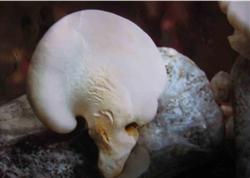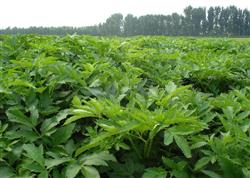How does Angelica dahurica grow and manage?

How does Angelica dahurica grow and manage? Please introduce angelica dahurica Angelica dahurica is suitable to grow in sandy loam and loam with flat terrain, deep, loose, fertile and well-drained soil. 1. Sowing: Angelica dahurica was sown in spring before and after the Qingming Festival, and sown in autumn between the End of Heat and White Dew. A shallow trench was opened according to the row spacing of 30cm-35cm with a depth of 1.5cm-2cm. The seeds were evenly scattered in the ditch, covered with soil and suppressed. 2. Field management (1) Seedling setting: when the seedling height is about 5 cm, the seedling starts with a plant distance of 6 Mel 9 cm, and when the seedling height is 15 cm, the seedling is fixed according to the plant spacing of 12 mi 15 cm. (2) Intermediate ploughing and weeding: combined with interseedling, the topsoil was loosened for the first time, and then deepened step by step to keep the field soil loose and free of weeds. It is no longer suitable for ploughing and weeding after the plants grow up and close ridges. (3) topdressing: Radix angelicae dahuricae dahurica da (4) watering: watering and drainage, Angelica dahurica likes water, but afraid of soil water, autumn sowing Angelica dahurica dahur (5) pulling out bolting seedlings: if a plant bolts and blossoms in May of the second year after sowing, it should be pulled out in time. 3. The main diseases of Angelica dahurica include spot blight, purple stripe, root-knot nematode and so on. Spot blight usually occurs in May, and the development of the disease can be controlled by spraying it twice with a 100-fold Bordeaux night or with a 500-fold solution of 65% zinc wettable powder 400 Mel twice. Purple feather control with 70% pentachloronitrobenzene powder 2 kg per mu plus 20 kg of plant ash was sprinkled in the soil and sown. Rotation is one of the main measures for the control of root-knot nematode disease. 1.8% avermectin EC and 48% chlorpyrifos EC can be mixed at 1:1, with 120ml per mu, watered and sprayed. The main pests of Angelica dahurica are aphids, red spiders and yellow wind dishes. When aphids occur, spray with 40% dimethoate 1500 Mel 2000 times or 50% fenathion 1000 times, once every 7 days, for 2 times in a row. In April, red spiders were sprayed with 0.2 ml 0.3 Baumedushi sulfur mixture once a week for several consecutive times. The yellow wind butterfly was sprayed with 800 times of 90% trichlorfon and 500 times of cyanobacteria, once every 5 times for 7 days, 3 times in a row. Click to get more planting techniques of Angelica dahurica
- Prev

Why is Bailing mushroom deformed?
Why is Bailing mushroom deformed? Please introduce the reasons why the malformation of Pleurotus ostreatus leads to the reduction of the grade of the products, and some even lose the commercial value, which seriously affects the economic benefits of the growers. The main reason for the emergence of deformed Pleurotus ostreatus is that the external culture conditions do not meet the growth requirements of Pleurotus ostreatus. ...
- Next

How to manage Angelica dahurica to achieve high yield?
How to manage Angelica dahurica to achieve high yield? Please give advice to plant Angelica dahurica da
Related
- Fuxing push coffee new agricultural production and marketing class: lack of small-scale processing plants
- Jujube rice field leisure farm deep ploughing Yilan for five years to create a space for organic food and play
- Nongyu Farm-A trial of organic papaya for brave women with advanced technology
- Four points for attention in the prevention and control of diseases and insect pests of edible fungi
- How to add nutrient solution to Edible Fungi
- Is there any good way to control edible fungus mites?
- Open Inoculation Technology of Edible Fungi
- Is there any clever way to use fertilizer for edible fungus in winter?
- What agents are used to kill the pathogens of edible fungi in the mushroom shed?
- Rapid drying of Edible Fungi

